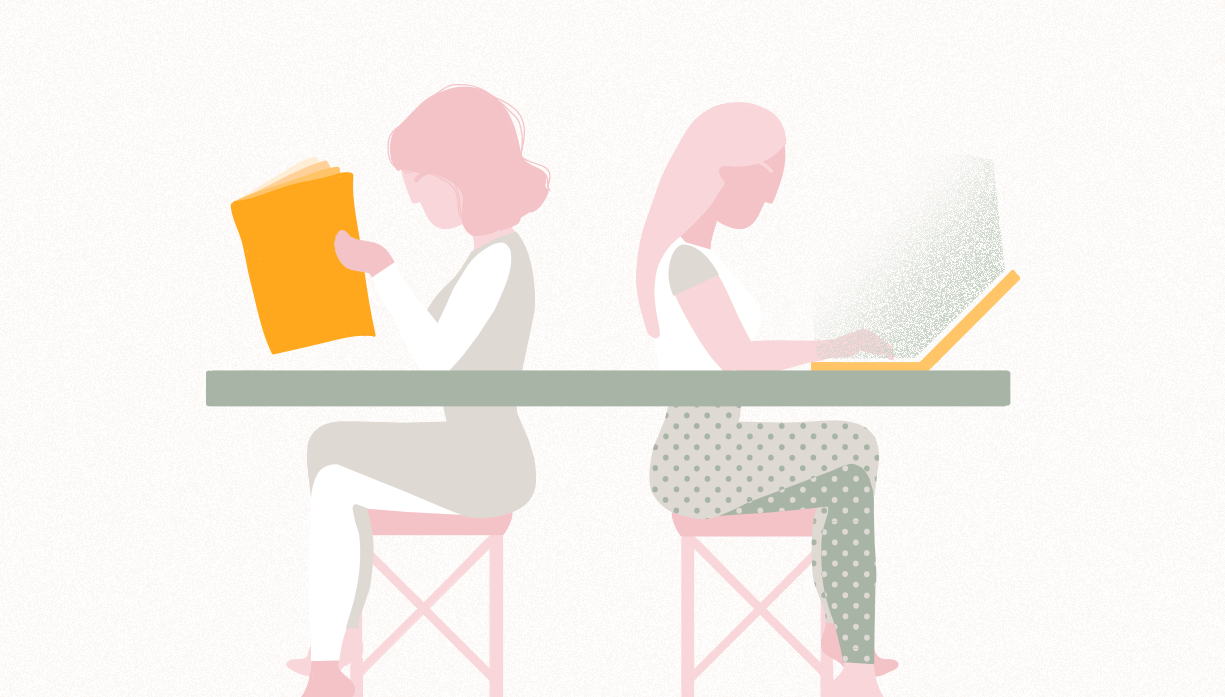In early November, when Condé Nast announced that Teen Vogue’s print run was coming to an end, the 16 year old in me died a bit. I read about lip gloss in the pages of Teen Vogue, and now I find myself reading its politics online. It seems like every few months beloved publications, such as Self, NYLON, The Village Voice, decide to pull a rug out from under their print editions to expand their digital presence.
As a teenager, every flat surface in my surroundings were covered in collages of cutouts from W Magazine and Vogue. I would cut apart every spread or article I didn’t like and put pieces together as if I were making my own little magazine. I was excited for the day when I would be running a publication myself. While I was no stranger to the internet, I had no idea that the glossy pages I held in my hands would soon be replaced with a screen.
According to a research study conducted by Pew Research Center, the percentage of Americans in 2013 who received their news on a mobile platform has risen from 54% to 72% in three years. The study, called “News Use Across Social Media Platforms 2016,” found that 62% of Americans get their news from social media. That comes out to six out of every 10 Americans. And that includes me. The older I grew, the more the internet flourished. By the time I was old enough to begin to understand the complexities of the world, I began reading more news and less culture publications.
We are living in a period where information is produced to be available as quickly as possible from every possible platform. Articles pop up in our notifications and slither into our social media feeds. This results in the problem of digital overload.
Digital overload is getting the same news notification multiple times, from multiple news sources. It’s opening your Facebook feed to statuses of shared articles from the same news sources who sent you the notifications. We don’t just absorb the information we’re given every day but also the conversation around it. Overwhelmed by the amount of information thrown at me every hour, I’ve found the only way to keep my eyes from exploding is to sit down with a print issue or a book.
So the catch is, I love the internet and I love print. Teenage me loved sitting in the school library reading books about black holes, but she also loved the internet and much of the nonsense on it such as, angsty Tumblr posts, oversaturated landscape photography on Flickr, and goofing up your MySpace profile to make it look as atrocious as possible. I’m probably part of the last age group that remembers what Limewire is. My parents had a paid subscription for me on Club Penguin because I was that into it, I kept in touch with my cousins via AOL Instant Messenger and I’ve been on Twitter since 2009 (What was I tweeting about? Probably my dog and black holes).
As a student, journalist and newbie designer, I’ve found value in both media. The internet gives me more opportunity to reach a wide audience and to be able to directly connect to them. It also gives me the option to tell stories through different media such as video and audio. Print gives me the opportunity to reach out to smaller and more specific communities. As a contributing writer for the Free Press, I know that a print will get into the hands of the student body because it will be distributed on campus. However, if published digitally, it’s not assured that my intended audience will cross paths with it (or even know if the Free Press exists).
There’s a small sense of intimacy between the reader and the physical copy. You know the pieces aren’t going anywhere. They’re not going to get buried under the content published within the next hour or lost in the graveyard of “Pieces I Meant to Bookmark On My Phone But Couldn’t Because My Wifi Connection Was Cut Off On the Subway.”
It’s upsetting to see print go, but as a reader, I have to admit that these publications are changing their ways of distribution because I’m part of the percentage of the population who has changed their way of reading. My love for print hasn’t decreased, but print’s purpose has changed. Digital news is a constant in my life. It’s always available whenever I need it, and even when I don’t. Print serves to disconnect me from the chaotic digital world. As a reader and writer watching publications put their print editions to bed, I’ve found even more value between me and the text.
Illustration by Ashlie Juarbe







